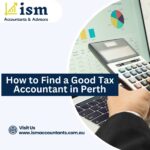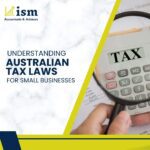If you’re a temporary resident leaving Australia, you may be eligible to claim your Departing Australia Superannuation Payment (DASP). DASP allows eligible individuals to claim superannuation after leaving Australia, ensuring you receive the super savings accumulated during your stay.
This guide from ISM Accountants helps you understand how to claim superannuation leaving Australia, outlines the DASP online application process, and covers everything from eligibility to tax implications.
What is Departing Australia Superannuation Payment?
The Departing Australia Superannuation Payment (DASP) is a program that allows temporary residents (e.g., holders of work, student, or holiday visas) to claim their superannuation after permanently leaving Australia. Superannuation is a retirement savings scheme mandated for Australian workers, but temporary residents can withdraw their super once they depart, provided they meet eligibility criteria.
Key Features:
One-time payment: You can only claim DASP once.
Tax implications: DASP tax rates apply, varying by age and the components of your super (taxable vs. tax-free).
Timing: You must apply after leaving Australia and once your visa has expired or been canceled.
Recommended Read: How to Reduce Taxable Income?
Eligibility for Departing Australia Superannuation Payment
To be eligible for DASP, you must meet the following conditions:
You were in Australia on a temporary resident visa (e.g., working holiday, student, or skilled worker visa).
You have left Australia permanently.
Your visa has expired or been cancelled.
You are not an Australian citizen or permanent resident.
Tip: Use the ATO DASP online eligibility tool to confirm your eligibility before applying.
How to Claim Superannuation Leaving Australia
To claim superannuation leaving Australia, you must apply for DASP once you have left the country. This application can be completed online through the departing Australia superannuation payment online system. Make sure you provide all necessary documentation, such as personal details, visa information, and proof of identity.
Leave Australia and let your visa expire or cancel it.
Access the DASP online application system via the ATO website.
Submit your:
DASP application form
Passport and visa details
Proof of identity
Wait for the DASP processing time (usually 2–6 weeks).
Receive your super refund (minus applicable tax) in your nominated bank account.
Recommended Read : Find An Accountant In Perth
DASP Online Application System
The DASP online application process is easy and accessible through the Australian Taxation Office (ATO) website or via myGov. You can submit your departing Australia superannuation payment form directly online, which makes the process much more efficient.
The DASP online application form is the fastest way to lodge your request. It’s available via:
Recommended Read : Tax Compliance Made Easy: Tips For Small Businesses
DASP Tax and Compliance
DASP tax depends on your age and the total amount of your superannuation. Typically, departing Australia superannuation payment tax rates are lower than regular income tax, but they can still vary. Here’s a breakdown:
- Under 60: Generally, you will be taxed at 65% on your super balance.
- Over 60: If you’re over 60, you may be eligible to withdraw your super without any tax.
Be sure to check the tax on departing Australia superannuation payment for your specific situation.
Important: The tax on departing Australia superannuation payment can vary depending on the super type, age, and fund structure. Always consult a tax expert like ISM Accountants before proceeding.
Recommended Read : Claiming Self Education Expenses In Tax Return
Types of Superannuation Funds
Before you apply for superannuation refund, know your fund type:
- MySuper accounts: A basic, low-cost account for Australian workers.
- Industry Funds: Super funds operated by non-profit organis
- ations cater mainly to their voters while providing cost-effective services to members.
- Retail Funds: Profit-driven funds with a wide range of investment choices.
- Self-Managed Super Funds (SMSFs): People having sound expertise in superannuation management are well-suited for this account type.
Each has different rules for withdrawing superannuation when leaving Australia. Your super fund type plays an essential role in your eligibility for Australia’s superannuation refund program so check your fund type immediately before application.
Recommended Read: Tax Solutions for Doctor in Perth
How to Apply for Departing Australia Superannuation Payment
Applying for DASP is straightforward. You can apply through the DASP online application system on the Australian Taxation Office (ATO) website. The process requires you to submit:
- DASP Australia online application form (also known as the departing Australia superannuation payment form).
- Proof of identity and relevant visa documents.
Once your application is processed, you’ll receive your refund within a few weeks. Be sure to double-check that you meet the DASP eligibility criteria before submitting your application.
Can I Claim Super After Leaving Australia?
Yes, you can claim superannuation after leaving Australia, but only after you’ve departed the country. You cannot apply for a departing Australia superannuation refund while still residing in Australia. The key is to wait until you are no longer residing in Australia and your visa is cancelled or expired.
How to Claim Super When Leaving Australia
If you’re ready to apply for superannuation refund Australia, simply follow these steps:
- Confirm your DASP eligibility.
- Complete the DASP online application form via the ATO website.
- Submit the necessary documents, including your proof of identity and visa details.
- Wait for your payment to be processed.
Make sure you submit your application as soon as you leave the country, as it is easier to apply before departing Australia.
Withdrawing Super When Leaving Australia
You have the option to withdraw super leaving Australia in one lump sum or as a stream of payments, depending on your choice. If you choose to withdraw it all at once, it will be deposited into your bank account, minus the DASP tax. If you decide to receive it in instalments, the remaining balance will stay in your super fund.
Superannuation Departing Australia: The Key Considerations
The superannuation departing Australia application process requires understanding tax implications together with eligibility requirements for this procedure. A superannuation payment made upon leaving Australia will influence your upcoming financial design but especially so when you plan to return.
Recommended Read: Contractor vs Employee Tax Implication
Can I Return to Australia After Claiming DASP?
Yes, you can return to Australia after claiming your DASP superannuation. You can create a new super account with a different fund provider. However, once you’ve claimed superannuation leaving Australia, it will be a new start for your super contributions.
Superannuation Refund vs. Departure Tax
There is no specific “departure tax” in Australia, but the DASP tax works similarly by taxing your super payout. Always review your super tax when leaving Australia to avoid surprises.
Common DASP Mistakes to Avoid
- Not applying on time: You can only apply for DASP superannuation after you leave Australia, so don’t delay submitting your claim.
- Forgetting tax implications: Understand the DASP tax rules and how they will affect your super refund. Be sure to account for the tax on departing Australia superannuation payment before making a withdrawal.
How ISM Accountants Can Help You
At ISM Accountants, we help clients with:
Superannuation withdrawal support
ATO DASP form filing
Tax advice for DASP claims
Ensuring compliance with DASP eligibility and deadlines
If you want your superannuation refund processed smoothly, talk to the Best Accountant in Perth—ISM Accountants.
Final Thoughts on DASP
Whether you’re on a working holiday, student visa, or another temporary visa, your accumulated super is yours to claim once you leave Australia. Make sure to:
Understand your DASP eligibility
Know the DASP tax rate
Submit your DASP application correctly
Need help? Get in touch with ISM Accountants – the professional accountant in Perth – for personalis
ed assistance with your superannuation claim Australia.
FAQs:
No, a portion is deducted as DASP tax, but you receive most of your accumulated super if eligible.
Yes, using the DASP online application system, you can claim your super back once you’ve permanently left.
You cannot directly refund or withdraw your superannuation contributions before you meet a condition of release. However, if you are a temporary resident who has left Australia, you may be able to claim your super as a Departing Australia Superannuation Payment (DASP). This allows you to withdraw your super when you permanently depart Australia.
It typically takes 2 to 6 weeks after successful submission of your DASP form.
Not exactly a refund, but superannuation refunds via DASP act similarly.
Yes, provided you meet DASP eligibility, your visa has expired, and you’re no longer in Australia.



